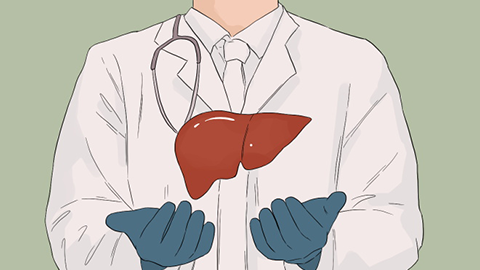What are the causes of hepatic hemangioma?
Generally, hepatic hemangiomas may be caused by congenital vascular developmental abnormalities, fluctuations in hormone levels, post-infectious deformation of hepatic capillaries, localized necrosis and fibrosis of liver tissue, or circulatory congestion within the liver. It is recommended to seek timely medical consultation, identify the underlying cause, and undergo symptomatic treatment under a physician's guidance. Detailed explanations are as follows:

1. Congenital vascular developmental abnormalities: Abnormal development of hepatic blood vessels during the embryonic period, coupled with abnormal proliferation of vascular endothelial cells, can lead to the formation of tumor-like structures. These are benign lesions that often present without obvious symptoms and are usually detected during physical examinations. They tend to grow slowly with age. No specific treatment is required, but regular liver ultrasound examinations are recommended to monitor changes in the size and morphology of the hemangioma, as these typically do not affect liver function.
2. Hormonal fluctuations: Changes in estrogen and progesterone levels in females may stimulate the growth of hepatic hemangiomas, causing an increase in their size, especially during puberty, pregnancy, or while taking contraceptive drugs. Growth usually slows after menopause. Long-term use of hormone-containing medications should be avoided as much as possible. During pregnancy, regular monitoring of hemangioma size is recommended, along with maintaining emotional stability to reduce the impact of hormonal fluctuations on the hemangioma.
3. Post-infectious deformation of intrahepatic capillaries: Previous infection of intrahepatic capillaries may lead to fibrosis of the vascular walls and dilation or deformation of the vessel lumen after inflammation subsides, resulting in the formation of hemangiomas. This is often accompanied by local vascular structural abnormalities, though there may be no obvious symptoms of infection, with abnormalities only detectable via imaging. There is no need for specific treatment targeting the infection. In daily life, alcohol consumption and hepatotoxic drugs should be avoided to protect liver function and prevent indirect stimulation of the hemangioma.
4. Local necrosis and fibrosis of liver tissue: Following localized necrosis or injury to liver tissue, compensatory proliferation and dilation of surrounding blood vessels may result in the formation of hemangiomas. These are usually solitary and associated with prior liver damage, with the necrotic area gradually encapsulated by fibrous tissue. Re-injury to the liver should be avoided, and regular follow-up of liver function and hemangioma size is recommended. If liver function remains normal, no specific intervention is generally required, as hemangiomas tend to remain stable once the necrotic area has stabilized.
5. Intrahepatic circulatory congestion: Obstruction of venous return or changes in hemodynamics within the liver can lead to localized circulatory congestion, causing vascular dilation and the formation of hemangiomas. These are often accompanied by slow local blood flow and typically present without obvious symptoms. In cases of severe congestion, discomfort or distension in the liver area may occur. Prolonged standing or sitting should be avoided, and appropriate physical activity encouraged to promote circulation. If congestion is caused by vascular malformations, interventional embolization of the hepatic hemangioma may be performed as directed by a physician. This procedure involves embolizing the feeding vessels to reduce blood flow congestion and control hemangioma growth.
Maintain a regular lifestyle in daily life, avoid excessive fatigue, follow a light and balanced diet, and reduce intake of high-fat and high-sugar foods to alleviate the metabolic burden on the liver. Engage in mild exercises such as walking or tai chi to enhance hepatic blood circulation, and maintain a positive mindset to avoid physical disturbances caused by anxiety.





